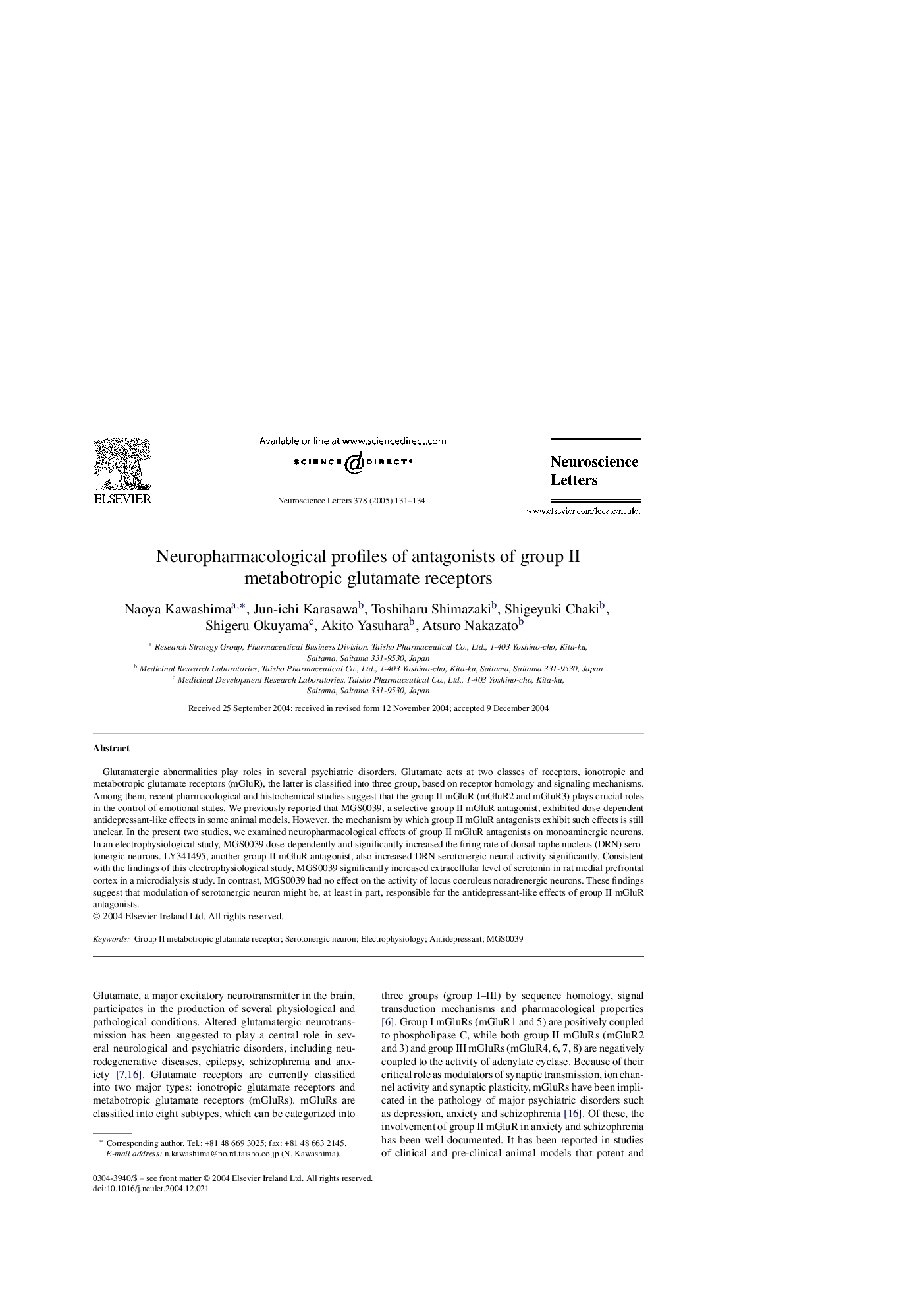| Article ID | Journal | Published Year | Pages | File Type |
|---|---|---|---|---|
| 9429265 | Neuroscience Letters | 2005 | 4 Pages |
Abstract
Glutamatergic abnormalities play roles in several psychiatric disorders. Glutamate acts at two classes of receptors, ionotropic and metabotropic glutamate receptors (mGluR), the latter is classified into three group, based on receptor homology and signaling mechanisms. Among them, recent pharmacological and histochemical studies suggest that the group II mGluR (mGluR2 and mGluR3) plays crucial roles in the control of emotional states. We previously reported that MGS0039, a selective group II mGluR antagonist, exhibited dose-dependent antidepressant-like effects in some animal models. However, the mechanism by which group II mGluR antagonists exhibit such effects is still unclear. In the present two studies, we examined neuropharmacological effects of group II mGluR antagonists on monoaminergic neurons. In an electrophysiological study, MGS0039 dose-dependently and significantly increased the firing rate of dorsal raphe nucleus (DRN) serotonergic neurons. LY341495, another group II mGluR antagonist, also increased DRN serotonergic neural activity significantly. Consistent with the findings of this electrophysiological study, MGS0039 significantly increased extracellular level of serotonin in rat medial prefrontal cortex in a microdialysis study. In contrast, MGS0039 had no effect on the activity of locus coeruleus noradrenergic neurons. These findings suggest that modulation of serotonergic neuron might be, at least in part, responsible for the antidepressant-like effects of group II mGluR antagonists.
Keywords
Related Topics
Life Sciences
Neuroscience
Neuroscience (General)
Authors
Naoya Kawashima, Jun-ichi Karasawa, Toshiharu Shimazaki, Shigeyuki Chaki, Shigeru Okuyama, Akito Yasuhara, Atsuro Nakazato,
